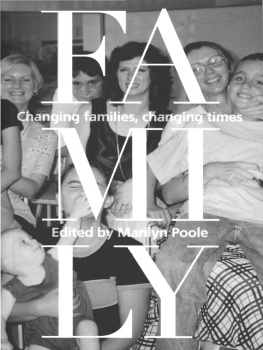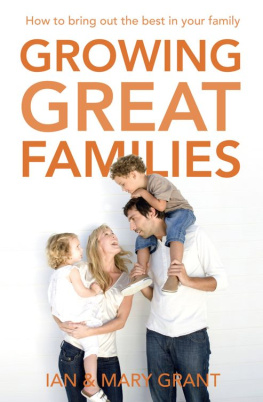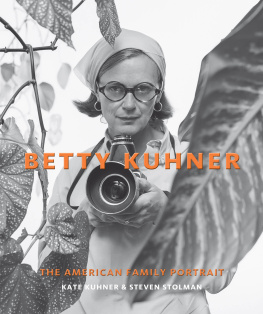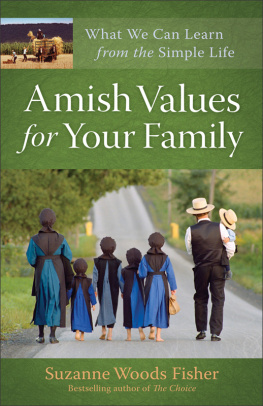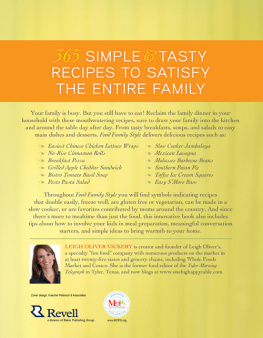
First published 1997 by Allen & Unwin
Published 2020 by Routledge
2 Park Square, Milton Park, Abingdon, Oxon OX14 4RN
605 Third Avenue, New York, NY 10017
Routledge is an imprint of the Taylor & Francis Group, an informa business
Copyright Michael Bittman and Jocelyn Pixley, 1997
All rights reserved. No part of this book may be reprinted or reproduced or utilised in any form or by any electronic, mechanical, or other means, now known or hereafter invented, including photocopying and recording, or in any information storage or retrieval system, without permission in writing from the publishers.
Notice:
Product or corporate names may be trademarks or registered trademarks, and are used only for identification and explanation without intent to infringe.
National Library of Australia Cataloguing-in-Publication entry:
Bittman, Michael.
The double life of the family.
Includes index.
ISBN 1 86373 629 8.
1. FamilyAustralia. I. Pixley, Jocelyn F. (Jocelyn
Florence), 1947 . II. Title. (Series: Studies in society
(Sydney, N.S.W.);).
306.850994
Set in 10.5/12pt Garamond by DOCUPRO, Sydney
ISBN-13: 9781863736299 (pbk)
| ABS | Australian Bureau of Statistics |
| ACTU | Australian Council of Trade Unions |
| AGPS | Australian Government Publishing Service |
| AIFS | Australian Institute of Family Studies |
| AIH&W | Australian Institute of Health and Welfare |
| ESV | Electricity Services Victoria |
| FVPET | Family Violence Professional Education Taskforce |
| GDP | Gross Domestic Product |
| GFCV | Gas and Fuel Corporation of Victoria |
| GHP | Gross Household Product |
| GMP | Gross Market Product |
| GNP | Gross National Product |
| HECS | Higher Education Contribution Scheme |
| ILO | International Labour Organization |
| INSTRAW | Institute on the Research and Training for the Advancement of Women |
| OECD | Organization for Economic Cooperation and Development |
| QDVTF | Queensland Domestic Violence Taskforce |
| TAFE | Technical and Further Education |
We all live in families. The ideas contained in this book were developed over many years. During this time, we received much stimulation and countless suggestions from friends and colleagues. We would like to point out the special role played by institutions in supporting this research: Michael Bittman thanks the Australian Bureau of Statistics for its support in 199394, the University of Essex, the University of Melbourne and his employer, the University of New South Wales, for the opportunity to take up research fellowships at the above institutions. Jocelyn Pixley thanks the University of New South Wales for the research grant for this project from the Faculty of Arts and Social Sciences and for the opportunity to undertake research leave in 1994, and McGill University and the University of Sheffield for the support and stimulation provided during that leave.
A note of thanks is due to our publishers, Allen & Unwinin particular our editor Elizabeth Weiss. She had the patience and belief in the project to see it through to its completion in the face of two authors juggling numerous other commitments.
We would like to acknowledge the material help received from friends and colleagues. Sue Donnellan, Amanda Elliot, Marina Paxman and Cathy Thomson provided research vital to the book. The authors gratefully acknowledge the generosity of Frances Lovejoy in allowing us to base much of our analysis in on an article by Michael Bittman and Frances Lovejoy. Terry Leahy, Denise Thompson and Kate Worth provided detailed advice and suggestions on the manuscript. Bruce Bradbury, Steve DAlton, Duncan Ironmonger, Clive Kessler, Paula Kelly and Paul Jones all read drafts of parts of the manuscript and offered the authors practical ideas, although the responsibility for the whole rests with us alone. Sociologists at the University of Newcastle, the University of New South Wales and the University of Wollongong also gave important critical commentary during seminars on sections of the book.
For permission to reproduce tables and figures, the authors would like to thank Peter Routh (of the ABS) who supplied data points for the age pyramid in .
To all our relations and friends who showed remarkable forbearance during the trial of our preoccupations with the book, we express our gratitude; in particular, we owe thanks to Louisa Dawson, Sam Dawson, Lorna Pixley, Carol Morris, Stefan Keller and Cassie Rickarby.
Most of us usually think about our family lives with some combination of hope and experience. Family life arouses feelings of elation and disappointment. We suggest that a phrase such as the double life of the family is a way to show how this mixture of love and bitterness is a part of most peoples expectations and experiences of the family. We do not argue that the idea that families are special is some silly delusion. Rather, there are endless inconsistencies between the family that most people hope for and the family as they experience it. Inconsistencies occur in all the arenas in which households try to manage both themselves and their relations with other institutions, often as individuals and not family members. These yearnings, that are rarely diminished by experience, change as we move from infancy to adulthood, from one household to another over the span of our lives.
Modern families in Western industrialised nations exist in highly individualistic societies. Modernity emphasises how the rational actions of isolated individuals are paramount despite the fact that modern society entails a greater level of interdependence than any other known social organisation. That is, there is a major inconsistency between the ideals of collective family life, the predominant, individualistic relations between people, and the extraordinary dependency on distant and impersonal organisations and activities, to which we are all subject. A petrol shortage creates chaos and food supplies can run out rapidly, a failure of garbage collection brings the threat of an epidemic and a decision in a boardroom in the United States puts thousands out of work in Geelong. How do all these different logics become played out in family life? We point to the inconsistencies and the uneven development of these relationships, and suggest that the ambiguities reside in the family as much as in the sociology of the family.
There is a social efficacy about the romance of family lifefrom boy meets girl, to having babies, right through to life as an elderly couplewhich involves tenacious hopes that in some way the family can live out this optimism. This sometimes results in equally tenacious opposition to such a trajectory. The myth of the family has its own reality despite the deep tensions that most people feel for their own families at different stages in their lives. We are not proposing that there is a Dark Side and a Light Side of the family, rather we explore how the modern family cannot fulfil the dream of intimacy even with the best intentions. We look at how the normative expectations of the modern family have developed over the past three or four hundred years and more. The notions that families are a haven of intimacy, that women are not meant to be the subordinates of men and that children should not be useful additions to household economies but priceless young humans who cannot be sold or sent out as child labour, are part of our modern consciousness.


